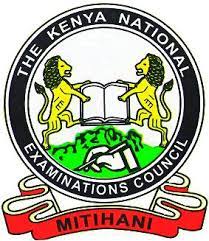
Define the following terms as applied:
(i) bandwidth;
(ii) data rate;
(iii) noise;
(iv) error rate.
With the aid of a block diagram describe a distributed network. (4 marks)
In reference to data communication, differentiate between point-to-point and multi-point links, stating an example in each case.
Draw a block diagram of a typical data communication model and explain its constituents.
(i) Distinguish between asynchronous and synchronous transmission with respect to data communication.
(ii) With the aid of a block diagram, explain parallel transmission as applied to data communication. (8 marks)
(b) Draw a block diagram of a pulse code modulation (PCM) and state functions of each block. (8 marks)
(c) A noiseless channel has a bit rate of 265 kbps with a bandwidth of 20 kHz. Determine the number of signal levels required for the channel. (4 marks)
3. (a) Describe the Huffman FEC (forward error correction technique) method as used in data transmission. (4 marks)
(b) (i) Explain the checksum error detection technique.
(ii) A total of 128 capital A letters are sent across a communication link, given that the 7 bit ASCII code for the capital letter A is 1000001,. Calculate the checksum to send for error detection. (10 marks)
(c) A signal travels through a cable from a point A to point B. Determine:
(i) the attenuation of the signal if at point B, the power is found to have reduced by a half;
(ii) the power of the signal at a point 5 km away from point B, if the power at B is 2 mW. (Assume attenuation of the cable is in decibels per kilometer (dB/km)). (6 marks)
(a) Define the following terms in relation
MasQmQmsingi.com
(i) packetization;
(ii) encapsulation. (4 marks)
(b) Contrast packet switching and circuit switching. (4 marks)
(c) With the aid of a block diagram, explain the operation of a virtual circuit network. (6 marks)
(d) (i) Explain rooting table as applied in datagram network. (2 marks)
(ii) Two buildings are connected using a T-l line leased from a communication service provider which has two 2X4I/O switches. Each I/O switch has 2 outputs folded into the input port to allow communication. Draw a schematic
diagram to realise this. (4 marks)
5. (a) Explain the following as applied in multiplexing:
(i) channel;
(ii) pulse staffing. (4 marks)
(b) Outline three distinguishing features between synchronous time division multiplexing and statistical time multiplexing. (6 marks)
(c) A voice channel of 2800 Hz bandwidth is used for transmission of data over a telephone line with a signal to noise ratio of 20 dB. Determine the channel capacity in bits/sec. (6 marks)
(d) In a multiplexed system, there are eight sources, each creating 250 characters per second. If the interleaved unit is a character and 1 synchronizing bit is added to each frame. Determine:
(i) data rate of each source (in kbps);
(ii) duration of each character in each source (in mS). (4 marks)
(i) Communications Authority of Kenya (CAK)/CCK;
(ii) Institute of Electrical and Electronic Engineers (IEEE). (4 marks)
(b) (i) With the aid of a diagram in each case, explain the following LAN topologies:-
(I) bus topology;
(II) ring topology.
(ii) Outline two demerits for each case in b (i). (16 marks)
7. (a) Outline four functions of each of the following LAN hardware devices:-
(i) Network Interface Card (NIC);
(ii) hub;
(iii) switch;
(iv) bridge.
(8 marks)
(b) A 1 Mbps link transmitting bits of frame length 8000 bits, established between two ground stations via a Geo stationery relay, at an altitude of 36,000 km. Determine the:
(i) length of the link in bits;
(ii) number of frames for the link;
(iii) total time for transmission of the frame.
Differentiate between lossy and lossless data compression techniques.
(ii) Explain the run length encoding data compression method. (6 marks)
(b) Highlight the difference between intraframe and interframe MPEG compression standard. (2 marks)
(c) (i) Describe coding efficiency as applied to data compression.
(ii) Table 1 shows data obtained from a data compression using Shannon-Fano codes.

Using the table, determine the:
(I) average number of bits per source message;
(II) coding efficiency.
(iii) Outline two demerits of using Shannon-Fano coding in data compression. (12 marks)
